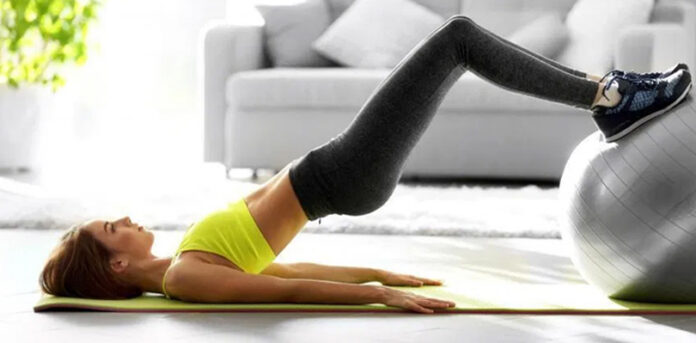Are you tired of hearing about the incredible benefits of yoga poses but feel too lazy to commit to a regular practice? Well, you’re not alone! Many of us crave yoga’s physical and mental perks without the daunting prospect of contorting our bodies into pretzel-like poses. But here’s the good news: yoga doesn’t have to be an exhausting endeavor!
In this blog post, we’ll introduce you to a collection of amazing yoga poses tailor-made for the self-proclaimed “lazy” folks out there. These yoga poses are not only incredibly easy to do but also deliver a wide range of benefits, from enhanced flexibility to inner peace. So, if you’re ready to dip your toes into the world of yoga without breaking a sweat, keep reading and discover a new way to revitalize your mind and body.
Yoga Poses For Lazy People
Here are some yoga poses for lazy people along with some explanation about each pose:
Child’s Pose (Balasana)
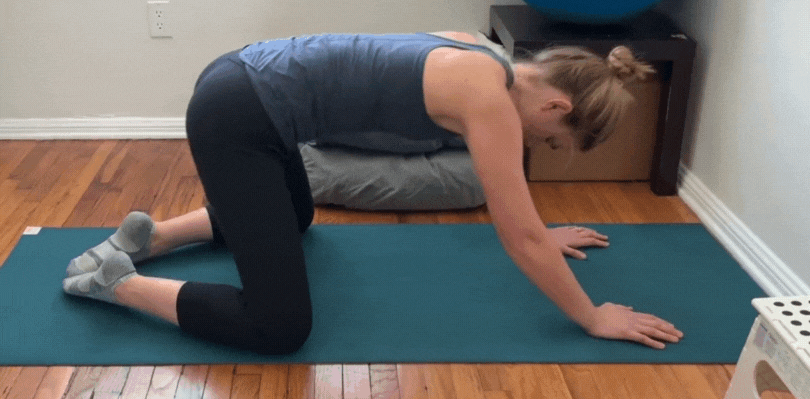
Start by kneeling on the floor, then sit back on your heels and stretch your arms forward with your forehead resting on the ground. This calming pose gently stretches the back, hips, and thighs while promoting relaxation and stress relief.
Corpse Pose (Savasana)
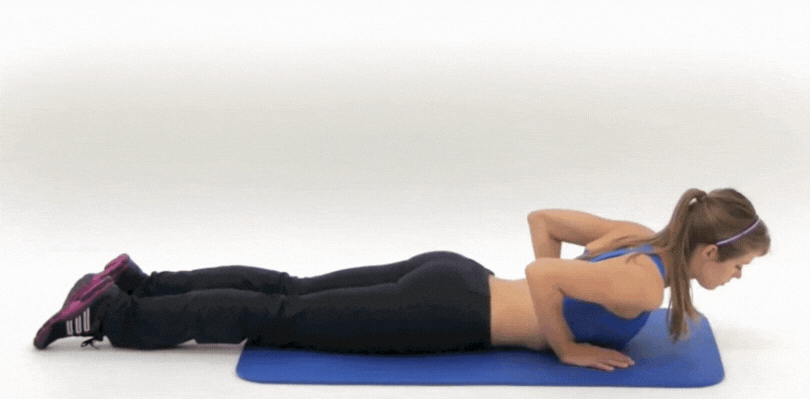
Lie down flat on your back with your legs slightly apart and arms by your sides, palms facing up. Savasana is the ultimate relaxation pose, helping to reduce stress, improve concentration, and promote a deep sense of peace.
Cat-Cow Pose (Marjaryasana-Bitilasana)
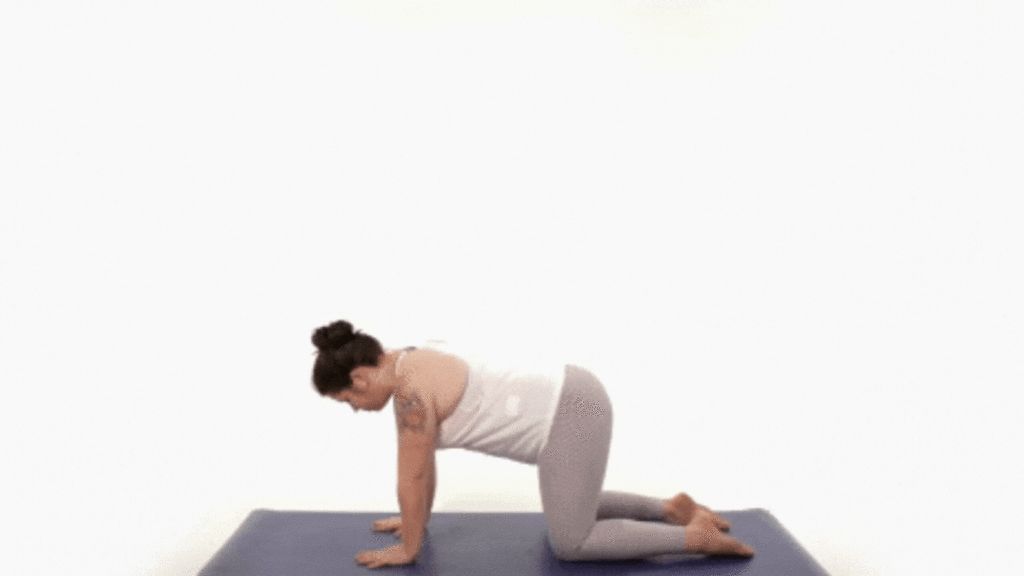
Begin on your hands and knees, and alternately arch and round your back while inhaling and exhaling. This gentle flow improves spinal flexibility, relieves back pain, and massages the internal organs.
Legs Up the Wall Pose (Viparita Karani)
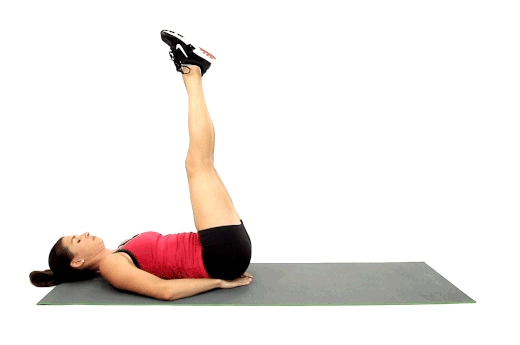
Sit close to a wall and extend your legs upward along the wall while lying on your back. This pose enhances circulation, reduces swelling in the legs, and relaxes the mind, making it perfect for lazy relaxation.
Supine Twist (Supta Matsyendrasana)
Lie on your back, bend your knees, and let them fall to one side while keeping your shoulders on the ground. This twist releases tension in the spine and aids in digestion.
Easy Pose (Sukhasana)
Sit cross-legged on the floor with your hands resting on your knees. Sukhasana is a simple meditative pose that promotes inner calm, improves posture, and increases hip flexibility.
Seated Forward Bend (Paschimottanasana)
Sit with your legs extended in front of you, and reach forward to touch your toes or shins. This seated stretch enhances flexibility in the hamstrings and lower back, and it’s an excellent way to relieve tension and stress.
These yoga poses are perfect for lazy days or for anyone new to yoga. Incorporating them into your routine can help you experience the physical and mental benefits of yoga without requiring too much effort. Remember to breathe deeply and listen to your body’s limits as you practice these poses.
Benefits Of Doing Yoga Poses For Lazy People
Here are a few benefits of practicing yoga poses for lazy people:
Stress Reduction
Lazy yoga poses, such as Child’s Pose and Corpse Pose, promote relaxation and reduce stress. They activate the parasympathetic nervous system, which calms the body’s fight-or-flight response, leading to decreased stress levels and improved mental well-being.
Improved Flexibility
Many of these poses gently stretch and lengthen various muscle groups, promoting flexibility. Seated Forward Bend and Supine Twist, for example, target the hamstrings, lower back, and spine, helping to increase overall flexibility.
Enhanced Circulation
Legs Up the Wall Pose is especially effective in improving circulation. Elevating your legs in this pose allows for better blood flow from the lower extremities to the heart, reducing swelling and helping to alleviate issues like varicose veins and edema.
Digestive Aid
Twisting poses, like the Supine Twist, massage and stimulate the abdominal organs, aiding in digestion and helping to alleviate discomfort caused by gas or bloating. Regular practice can lead to a healthier digestive system.
Mental Calmness
The meditative aspect of poses like Easy Pose and Corpse Pose fosters mental clarity and calmness. These poses provide an opportunity for mindfulness and relaxation, helping to reduce anxiety and improve concentration.
Pain Relief
Lazy yoga poses can provide relief from common discomforts such as back pain and headaches. Cat-Cow Pose, with its gentle spinal movement, can alleviate tension in the back, while Savasana can relieve headaches by promoting deep relaxation.
Incorporating these poses into your daily routine, even on lazy days, can bring about holistic benefits for your physical and mental well-being. They offer a gentle way to maintain and improve your health, making yoga accessible and enjoyable for people of all fitness levels and lifestyles.
Tips And Techniques To Do Yoga Poses For Lazy People
Here are some tips and techniques to help you perform yoga poses for lazy people effectively:
Start Slow And Mindful
The key to successful lazy yoga poses is to start slowly and mindfully. Begin with deep, mindful breaths to relax your body and mind. This sets a calm and focused tone for your practice.
Use Props
Don’t hesitate to use yoga props like cushions, bolsters, or blankets to support your body in poses. For instance, in the Supine Twist, place a cushion or blanket under your knees to reduce strain on your lower back.
Proper Alignment
Focus on maintaining proper alignment in each pose. This ensures that you receive the maximum benefits and minimizes the risk of injury. Pay attention to cues like keeping your spine straight or your shoulders relaxed.
Stay Relaxed
Lazy yoga poses should be comfortable and relaxing. If you find yourself straining or experiencing discomfort, adjust the pose or use props to make it more comfortable. The goal is to ease into the pose, not force it.
Breathing Awareness
Pay close attention to your breath. Inhale deeply through your nose and exhale slowly through your mouth or nose, depending on the pose. Use your breath to deepen your stretch and release tension.
Consistency Is Key
Consistency is crucial for seeing the benefits of these poses. Try to incorporate them into your daily routine, even if it’s just for a few minutes. Over time, you’ll notice your flexibility, stress levels, and overall well-being improvements.
Remember that yoga is a personal practice, and it’s essential to listen to your body. If you feel pain or discomfort beyond a gentle stretch, ease out of the pose and consult with a yoga instructor or healthcare professional. With patience and regular practice, you’ll reap the rewards of these yoga poses designed for lazy days, promoting both physical and mental well-being.
How To Get More From Yoga Poses For Lazy People
Here are a few tips to help you get more from yoga poses for lazy people and maximize their benefits:
Set An Intention
Before you begin your lazy yoga practice, set a clear intention for what you hope to achieve. Whether it’s stress reduction, increased flexibility, or mental calmness, having a purpose for your practice can enhance its effectiveness.
Deepen Your Breath
Focus on deep, mindful breathing throughout each pose. Deep breaths not only help you relax but also assist in releasing tension and increasing your body’s oxygen supply, enhancing the benefits of the poses.
Extend Hold Times
As you become more comfortable with the poses, try extending the amount of time you hold each one. Gradually increasing your hold times allows for deeper stretching and relaxation, amplifying the benefits.
Combine Poses Into A Sequence
Create a simple yoga sequence by combining multiple lazy yoga poses. Flowing from one pose to another can improve fluidity, enhance circulation, and provide a more comprehensive experience. For example, you can move from a Child’s Pose to a Cat-Cow Pose and then into a Supine Twist.
Meditate Afterward
After completing your lazy yoga practice, meditate in a comfortable seated or lying position for a few minutes. This will help you consolidate the mental and physical benefits you’ve gained, leaving you feeling even more relaxed and centered.
By incorporating these tips into your lazy yoga routine, you can make the most of each pose and enjoy a more fulfilling practice that contributes to your overall health and well-being.
FAQs
Can I practice these lazy yoga poses if I’m a beginner?
Yes, absolutely! These yoga poses are beginner-friendly and can be an excellent starting point for those new to yoga. They are designed to be gentle and comfortable, making them accessible to individuals of all fitness levels. However, it’s essential to start slowly, pay attention to your body, and avoid pushing yourself too hard. If you’re uncertain about your form or have any underlying health concerns, consider taking a beginner’s yoga class or consulting a yoga instructor for guidance.
How long should I hold each lazy yoga pose to experience the benefits?
The duration of holding each pose can vary depending on your comfort level and flexibility. As a general guideline, start with 30 seconds to a minute for each pose. Over time, you can gradually increase the duration as your body becomes more accustomed to the stretches. The goal is to hold the pose long enough to feel a gentle stretch and relaxation, but not so long that it becomes uncomfortable or painful. Listen to your body and adjust the duration accordingly.
Can these poses help with specific health issues, such as back pain or anxiety?
Yes, many of these lazy yoga poses offer specific benefits for common health issues. For example, Child’s Pose and Cat-Cow Pose can help alleviate back pain by stretching and gently mobilizing the spine. Corpse Pose and Easy Pose is effective for reducing anxiety and promoting mental calmness through relaxation and mindfulness. Supine Twist can aid digestion and alleviate discomfort in the abdominal area. However, it’s important to remember that while these poses can be beneficial, they should not replace professional medical advice or treatment for serious health conditions. If you have specific health concerns, consult with a healthcare provider or a qualified yoga instructor for tailored guidance.

